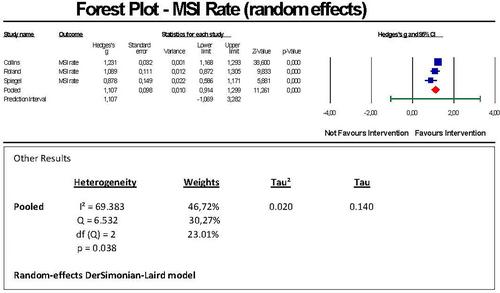The impact of mechanical devices for lifting and transferring of patients on low back pain and musculoskeletal injuries in health care personnel—A systematic review and meta-analysis
Abstract
Objectives
Heavy lifting in nursing is highly associated with low back pain (LBP) and musculoskeletal injuries (MSI). We aimed to evaluate the impact of mechanical devices used for patient lifting and transferring on risk of LBP and MSI of health care personnel.
Methods
We conducted a systematic review and meta-analysis. The literature search was performed during 1st and 12th September 2021 using 17 electronic databases and handsearching of bibliographies of included studies. Twenty studies were included in the qualitative synthesis and eight studies with in total 2087 participants in the meta-analysis. Dependent on the study design, risk of bias was assessed by Cochrane RoB 2.0, EPOC, and MINORS. We conducted random-effects meta-analyses assessing Hedges's g and 95% CI of MSI rate, perceived LBP, and peak compressive spinal load. We calculated prediction intervals and conducted a cost-benefit analysis (CBA).
Results
All outcomes showed significant, adjusted pooled effect sizes (MSI rate: g = 1.11, 95% CI 0.914–1.299; perceived LBP: g = 1.54, 95% CI −0.016–3.088; peak compressive spinal load: g = 1.04, 95% CI −0.315 to 2.391). True effect sizes in 95% of all comparable populations fell in the following prediction intervals: MSI rate = −1.07-3.28, perceived LBP = −0.522–3.594, and peak compressive spinal load = −15.49 to 17.57. CBA revealed cost-benefit ratios of 1.2 and 3.29 between cumulative total savings and investment costs of intervention.
Conclusions
Prediction intervals confirmed strong true effect sizes for MSI rate and perceived LBP in 95% of all comparable populations but not for peak compressive spinal load. Mechanical lifting and transferring devices displayed a favorable cost-benefit ratio and should be considered for clinical implementation.


 求助内容:
求助内容: 应助结果提醒方式:
应助结果提醒方式:


